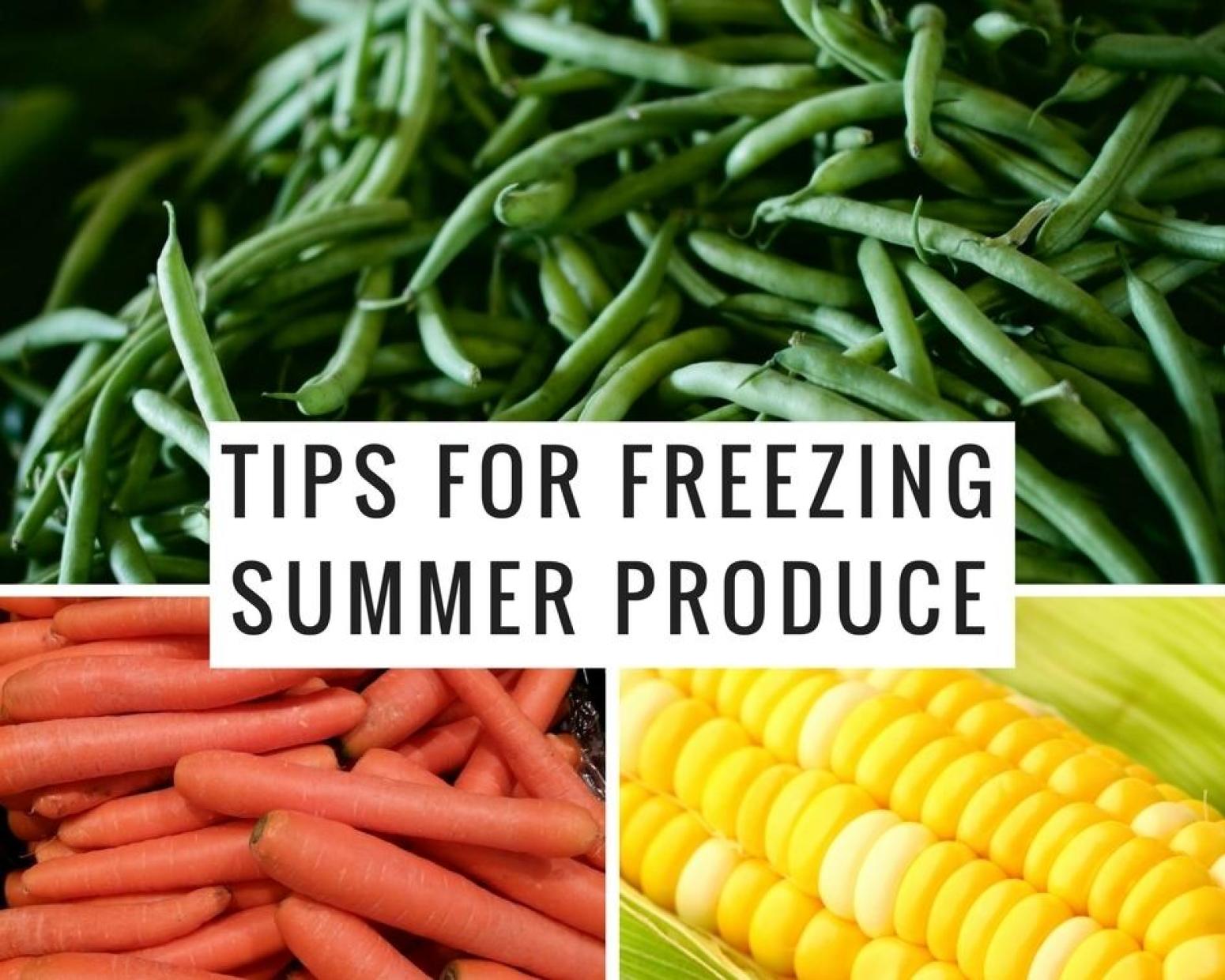Are you having trouble using up this summers garden bounty? Good for you… you don’t just have a green thumb you’ve got a green hand! Use these tips to store all the extra produce so you can enjoy it when the days are shorter and the nights are longer than they are now.
How to Freeze Most Summer Vegetables
- Wash and trim vegetables.
- Over high heat, boil a large pot of water (about 1 gallon).
- When the water comes to a boil, slowly add prepared vegetables.
- Blanch veggies for 2-4 minutes (see more details below). You’ll start to count the time once the water begins to boil again.
- Once cooked, transfer to an ice bath to stop cooking for 1-2 minutes.
- Store in a freezer safe container.
- To reheat, steam them, microwave them, use in stir fries, or add to a Crock Pot/pressure cooker. The key to preventing mushy vegetables is checking them frequently to avoid overcooking.
How Long to Blanch Vegetables
Asparagus: Trim the woody ends and blanch for 2-3 minutes.
Peppers (bell peppers, hot peppers, etc.): Remove stems and seeds. Cut into ½ inch pieces and blanch for 2-3 minutes.
Carrots: Peel and cut into ¼ inch rounds or cubes. Blanch for 2 minutes.
Corn: Husk the corn and remove the kernels. Blanch for 2 minutes.
Green Beans: Trim the stems and blanch for 2 minutes.
Zucchini: Wash and cut into ½ inch pieces. Blanch for 1-2 minutes.
Other Summer Bounty To Freeze
Avocados: They are the exception… you don’t want to blanch these. Cut them in half, peel them and then place in freezer bags. Or, you can scoop out the flesh, mash it down/puree it, and then place in a freezer bag. Avocados are technically a fruit, so they don’t hold up as well as vegetables after being thawed. Never fear, they are still ideal for guacamole and as an ingredient in sauces.
Cucumbers: Another vegetable imposter that doesn’t freeze without a little preparation. If soaked in a brine before freezing, you can enjoy them whenever you want. Create a brine with equal parts oil, sugar, and vinegar. Let the cucumbers sit refrigerated in the brine for 2 hours and then freeze (with the brine) in air tight containers, such as mason jars, for up to several months. Don’t forget to leave a little headspace in your freezing container. When you’re ready to enjoy, let them defrost in the fridge.
Tomatoes: Summer is full of this fruit that we all consider a vegetable. This one is easy peasy, just wash them and freeze them. It’s usually best to core them, but you don’t have to. Tomatoes will be best used later on in sauces and as part of recipes. Don’t expect to chop them up and throw them on a salad they will be too mushy.
Rhubarb: No blanching required, just trim the woody edges and cut into cubes to freeze.
